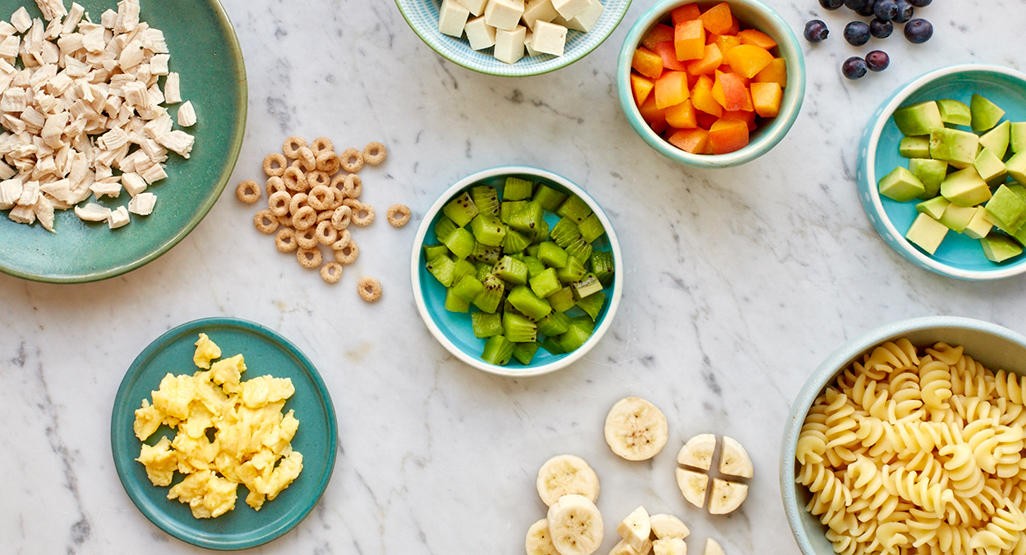Introducing finger foods is a significant milestone in your baby’s development, fostering independence, enhancing fine motor skills, and promoting coordination. This guide provides comprehensive information on When To Introduce Finger Foods, how to start, and what foods are best suited for your little one.
Determining the Right Time for Finger Foods
The ideal time to introduce finger foods is generally around 9 months old. At this age, babies typically develop the grasping ability and hand-to-mouth coordination necessary to manage finger foods effectively. However, some babies may be ready earlier, while others may need a little more time.
Signs that your baby is ready for finger foods include:
- The ability to sit up independently.
- Good head control.
- The ability to grab objects and bring them to their mouth.
- Showing interest in the food you’re eating, perhaps even reaching for it.
- Trying to grab the spoon during feeding.
It’s important to observe your baby’s cues and developmental progress. If they’re exhibiting these signs, it might be time to explore the world of finger foods.
Some parents opt for a baby-led weaning (BLW) approach, introducing finger foods as early as 6 months and bypassing traditional spoon-feeding. BLW encourages babies to self-feed soft, safe finger foods from the start. If you’re considering BLW, research it thoroughly to understand the guidelines and best practices.
 Bowls of baby finger foods like banana, chicken, cheese, and veggies
Bowls of baby finger foods like banana, chicken, cheese, and veggies
Overcoming Initial Challenges
Don’t be discouraged if your baby doesn’t immediately take to finger foods. It’s perfectly normal for them to need time to adjust to new textures and learn how to manage solid foods. If your baby seems hesitant or struggles to self-feed, wait a week or two and try again. Patience and persistence are key.
Gagging is another common concern when babies start eating finger foods. It’s a natural reflex that helps prevent choking by pushing food forward in the mouth. While gagging can be alarming, it’s usually not a cause for concern. Allow your baby to work through it themselves, and closely supervise them to ensure they are not choking. Knowing the difference between gagging and choking is crucial for every parent.
A Gradual Introduction to Finger Foods
To make the transition to finger foods smoother, consider these tips:
- Start with familiar flavors: Introduce finger foods that resemble purees your baby already enjoys. For instance, if they like banana puree, offer small, soft pieces of ripe banana.
- Small portions: Begin by placing a few pieces of food on your baby’s highchair tray or plate during mealtime. Add more as they eat.
- Highchair safety: Always feed your baby in a highchair to minimize the risk of choking, rather than in a car seat or stroller.
- Pincer grasp development: Initially, your baby may use their whole hand to grab food. As their fine motor skills improve, they will develop the pincer grasp, using their thumb and forefinger to pick up smaller pieces.
Safe and Nutritious Finger Food Options
Choosing the right finger foods is essential for your baby’s safety and nutritional needs. Here are some excellent options to consider:
- Cereals: O-shaped toasted oat cereal or other unsweetened cereals are easy for babies to handle and dissolve quickly.
- Bread: Lightly toasted bread or bagel strips, spread with vegetable puree, nut butter, guacamole, or hummus, provide carbohydrates and added nutrients.
- Soft Fruits: Slices of banana, mango, plum, pear, peach, cantaloupe, or seedless watermelon offer natural sweetness and essential vitamins. Ensure they are very ripe, peeled, and pitted.
- Tofu: Small cubes of tofu are a good source of protein.
- Pasta: Well-cooked pasta spirals, cut into smaller pieces, are easy to gum and swallow.
- Cheese: Small chunks of soft cheese provide calcium and protein.
- Eggs: Chopped hard-boiled or scrambled eggs are a great source of protein and other nutrients.
- Cooked Prunes: Mashed, stewed prunes can help with constipation.
- Cooked Vegetables: Small pieces of well-cooked vegetables like carrots, peas, zucchini, potato, or sweet potato provide essential vitamins and minerals. Steamed apples or carrots cut into long, thin strips are also good options.
- Broccoli & Cauliflower: Small, well-cooked broccoli or cauliflower “trees” are packed with nutrients.
- Meat & Fish: Pea-sized pieces of cooked chicken, ground beef or turkey, or fish offer protein and iron.
- Beans: Well-cooked beans are a good source of protein and fiber.
During this exciting phase, your baby explores food’s texture, color, and aroma while developing healthy eating habits. Offer a variety of foods, but avoid those with added sugar or high sodium content, as these are not healthy for your little one.
Foods to Avoid
Certain foods pose a choking hazard and should be avoided:
- Uncut round foods like grapes and blueberries
- Large chunks of meat
- Globs of nut butter
- Hard, raw fruits and vegetables (unless cooked until soft and served in long strips)
Always prioritize safety when selecting finger foods for your baby.
Addressing Allergies
Experts now recommend introducing potential allergenic foods like peanuts, fish, and soy alongside other solid foods. Early and regular exposure may lower the risk of developing allergies. If you have concerns about allergies, consult your pediatrician. Otherwise, introduce these foods one at a time and watch for any allergic reactions.
Conclusion
Introducing finger foods is a rewarding experience for both you and your baby. By understanding when to introduce finger foods, what to offer, and how to do it safely, you can help your little one develop healthy eating habits and essential motor skills. Remember to be patient, observant, and always prioritize your baby’s safety. Enjoy this exciting milestone in your baby’s culinary journey!